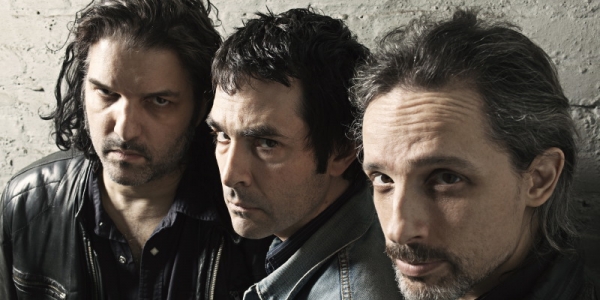“I’m a visual arts curator, I’m not really involved with dance,” says Mathews, “but I’m very interested in in the crossover between dance and visual arts. It’s appearing more and more in artists’ practices. In the last couple of years it’s had a real vibe again – there’s a lot of movement and choreography and that’s why I’m interested and why I’m involved.”
Action/Response is a multifaceted project developed by Mathews which features a number of artists performing separate works across North Melbourne’s Errol Street precinct. “It’s also a response to my living in North Melbourne for a couple of years and noticing the unique vibe of Errol Street,” attests Mathews. “It’s quite a modest landscape – the buildings are all one or two floors, but the area is slowly undergoing gentrification. I wanted to do something on the Errol Street streetscape before it becomes irretrievably remodelled.”
Creating Action/Response required Mathews to get up close and personal with her local community. “Being part of the community and having witnessed change over the last couple of years it was great to be able to get out there and knock on doors and ask people if they wanted to be involved,” says Mathews. She received a great response. “There are things going on within all sorts of spaces. We are working in cafes, parks, a pub, laneways. There will be things going high and low. There will be music coming out of upstairs windows. There will be man who’s an incredible opera singer performing with turntables in a front window of a café. There’s a work being presented in a tax office.”
At the core of the project are two everyday actions, falling and turning. They are, of course, often used in symbolism and metaphor, and have provided Mathews and her collaborators with a rich source of inspiration as they developed the various works. “I was interested in something ubiquitous, something which we all do, knowingly or unknowingly,” states Mathews. “That’s where I wanted to start.”
At the outset of the project Mathews invited a number of writers, each with distinctive backgrounds, to write a piece based on one or other of these actions. “Ramona Koval ran the book show on ABC Radio National for forever and used to be a science journalist,” says Mathews. “I asked her to write a piece on turning and she came up with a piece which considers the action of turning from the galaxy right down to the level of molecules. But she also considers the idea of turning a new leaf, turning on one’s heel, and the turning of a wheel. It’s a poetic but very scientific look at the motions of turning.”
Chris Johnston, a senior writer for The Age and writer of the weekly music column The Crate, also contributed to the project. “I asked him to write about falling,” remembers Mathews. “I thought he would write about falling in the context of music, but actually he’s written an incredibly beautiful series of vignettes which tell an autobiographical story. He’s written about September 11, about his grandfather in World War II, and about falling out of his bedroom window as a teenager.”
After the completion of these written responses, Mathews shared these with ten dancers, musicians and visual artists, all of whom have created a performance response to a combination of the actions and the texts. “It’s really interesting,” says Mathews. “While everyone has considered the action itself, some have been motivated by the text, some have been motivated by the fact I’ve asked them to choose a site to perform in the Errol Street precinct, and some have created a response more influenced by the audience they expect.
“Because it’s happening on Errol Street there are a few factors – there’s a dedicated Dance Massive audience which is obvious and well established, but there’s also the general public going about their business. There’s the tram, the supermarket, the school – a whole hub of activity with its own pattern and tempo. The artists are appealing to an ‘informed’ dance audience but also very much to a general audience. Some of the artists, particularly the dancers, responded to that notion of both a dedicated and a transient audience – how am I going to interact with them? I’m quite interested in the response of people stepping off a tram and seeing what’s going on – seeing an artist perform with a large metallic hoops or hearing a duet being performed from the balcony of the North Melbourne Town Hall and the upstairs room of a Malaysian restaurant.”
While it’s possible to wander the precinct and view each of the works, Mathews also hopes that the casual audience may encounter one performance then become curious and hunt for others. “They might look up to hear where that voice is coming from, or they might go down that laneway where they don’t normally go because it’s a bit dirty and rubbishy,” she says. “My hope is that these works might get people to pause and look and listen a little bit more closely.”
BY JOSH FERGEUS







